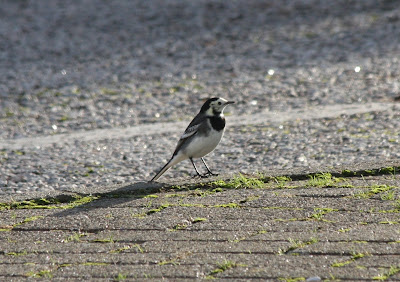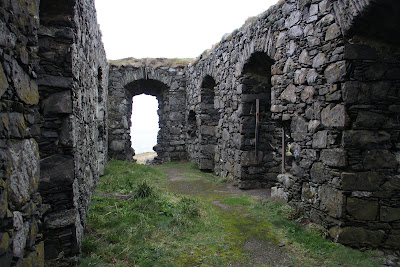This panorama was taken in Galloway Forest Park. It was taken from Bruce’s Stone which overlooks Loch Trool. The stone commemorates the victory of Robert the Bruce and his men over the English near this spot in 1307.
Galloway Forest Park is similar to a State Park in the USA. This park is very hilly and forested with numerous streams, waterfalls, and cascades. This stream and bridge are by the visitor’s center for the park.
This cascade is just down stream from the bridge in the previous photo. It was raining the entire time I was in Galloway Forest Park.
I went for a hike on a trail up a valley toward the top of a mountain/hill (Merrick). The trail, seen in the above photo, was narrow and often included water running downhill toward me (due to the rain). It didn’t take long before my sneakers and socks were completely soaked. But I would do it again. I made the best of the time I had, rain or shine (mostly rain).
There was a raging stream coming down the small valley that I hiked up. After coming back down I went further down hill into some woods. This was what the stream looked like in the woods near a small bridge. The stream was “squeezed” between the rocky outcroppings to make a small waterfall. There were a lot of ferns and mosses growing on the rock walls.
This was a single-lane bridge crossing the small stream (The small waterfall in the previous photo is about 30 feet to the left of the bridge). This forest, road, and bridge reminded me of something that would be seen in a Robin Hood movie set in Sherwood Forest.
FOOD
I thought I would end with a little about the food. I tried to eat the local cuisine as much as possible. I tried a few new things. The above photo was my first meal in Scotland at a small restaurant in Stranraer. This was breakfast at lunchtime. The only odd thing was baked beans for breakfast.
A “traditional” Scottish food is haggis. This is the haggis that I had in Stranraer (the dark stuff on the left). According to Wikipedia it is a “savoury pudding containing sheep's 'pluck' (heart, liver and lungs), minced with onion, oatmeal, suet, spices, and salt, mixed with stock, and traditionally encased in the animal's stomach”. I had it served the traditional way with "neeps and tatties" (Swedish turnips and mashed potatoes). I ate haggis this one time, but didn’t have it again. I had “black pudding”, also known as “blood sausage”, twice for breakfast. It was okay. A few other things that I had were fish and chips, steak pie, and a “ham roll” (just ham in a roll) and chips. Overall the food wasn’t all that great.













































